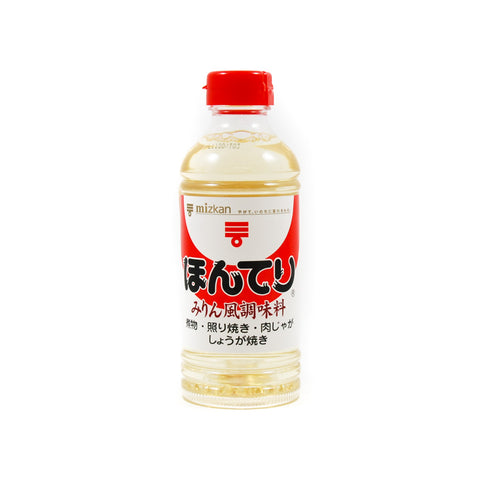A Buyer’s Guide to Mirin

Mirin is a sweet Japanese rice wine, for cooking. It is commonly paired with soy sauce to create a complete profile of sweet, salty, sharp, umami flavours.
Use mirin to make a simple dipping sauce for tempura prawns, with soy sauce, lime juice and sliced spring onions. Or combine it with soy, ginger, garlic and sesame oil to make a classic teriyaki glaze.What does mirin taste like?
Mirin has sherry-like sweetness, and with 14% alcohol content there is a gentle warmth that stays on the palate. It is slightly sharp, with sweet-tangy notes that some people compare to apple cider vinegar. However it has depth and roundness, similar to a sweet marsala.
Which mirin should I buy?
Hon mirin means ‘true mirin’ and is the most premium type of mirin you can find. Hon mirin should have a very short ingredient list of just rice, koji and shochu. It has an alcohol volume of 14%.
After hon mirin, choose from a selection of everyday mirins that have a lower alcohol volume, and are more suited to cooking. Most mirins are in fact mirin-style seasonings with less than 1% of alcohol content.
Mirin-style seasonings were first developed to accommodate rice shortages – creating the same flavour profile without using the same quantities of rice as hon mirin. And in fact many people prefer to use mirin-style seasoning because of the lower alcohol content, and more affordable price.
What can I use as a substitute for mirin?
It’s certainly worth using mirin for a truly authentic Japanese flavour, however if you simply can’t wait for your Sous Chef delivery to arrive there are a couple of options available. However, none of these truly replicate the roundness and depth of mirin.
- Cooking sake is very similar to mirin, but without the sweetness. Use it with a teaspoon of honey to achieve a similar effect.
- Meanwhile, sake will also give you much of the same flavour profile as mirin, minus the toffee-sweetness
- Dry sherry will give that sweet-sharp flavour, but with a higher alcohol content.
- Similarly, sweet marsala wine has that brown sugar sweetness but a higher alcohol content.
What mirin do we stock?
Our Kankyo Shuzo hon mirin is made with rice that has been slowly fermented over 6 months, at a low temperature. You’ll find sweet, roasted and deep umami flavours in this bottle – use it as a condiment or in dressings to really appreciate the subtlety of these flavours. And unlike standard mirin which often includes salt, you can also enjoy hon-mirin as a drink.
Mizkan’s mirin is a popular Japanese brand that balances the traditional sweet umami flavours, without a high alcohol percentage. Try adding a dash to the cooking water when poaching fish, or adding a splash to the pan after stir-frying vegetables. It’s also delicious with poached pears!
Likewise, with an alcohol content below 1%, this Honteri mirin can be added at the end of your recipe and doesn’t need to be cooked for the alcohol to burn off. Use it to make a classic gossy yakitori sauce for chicken or salmon.
3 ways to cook with mirin
Donburi: Breakfast Oyakodon
Use mirin with dashi stock, sake and soy sauce to make a broth for gently simmering your chicken. Once the chicken is tender and cooked, crack an egg into the mix and stir rapidly, until it is set. Serve with rice at breakfast - or any time of day.
Yakitori Chicken
Make a classic sticky and shiny yakitori glaze for chicken skewers, with mirin, soy sauce, sake and sugar. Reduce it until it is thick and glossy, then pour over your grilled chicken and spring onion kebabs.
Miso & Maple Glazed Aubergine
Niki Webster’s recipe for aubergines is sweet, salty and savoury. Mirin is combined with maple syrup, tamari and toasted sesame oil for a richly umami dressing. Perfect with coriander and mint leaves.
Feeling inspired? Shop more Japanese ingredients, or discover more Japanese recipes.






